When Manchester City flew to Germany to play Schalke at the Veltins-Arena for the first leg of their Champions League round of 16 tie, they managed to scrape through with a 3-2 win in the 90th minute after being 2-1 down. One would have expected a contest of close margins for the second leg. Instead, City turned on the fireworks at the Etihad with a seven-goal avalanche over Schalke.
City won 10-2 on aggregate. Only once previously has a team won by a larger margin in the Champions League knockout stages (Bayern Munich 12-1 Sporting CP in the 2008-09 round of 16). Yet, when Pep Guardiola was interviewed on his opinion of the game, he seemed unimpressed by the performance during the first half hour. Why so?
Assuming Guardiola’s obsessive drive for perfection and high standards never falters, in this tactical analysis we examine how City’s win drew an uncanny resemblance to his invincible Barca days.
Lineups and form comparison
In the first fixture, Guardiola experimented playing Fernandinho as a centre-back who overloaded the midfield in the attacking phase. In this game he chose a full-back, Danilo, to partner Aymeric Laporte in defence. With Kevin De Bruyne and Fernandinho sidelined by injury, Guardiola showed great confidence starting Oleksandr Zinchenko for this important fixture. Leroy Sané and Raheem Sterling were both chosen to start given their impressive form recently.
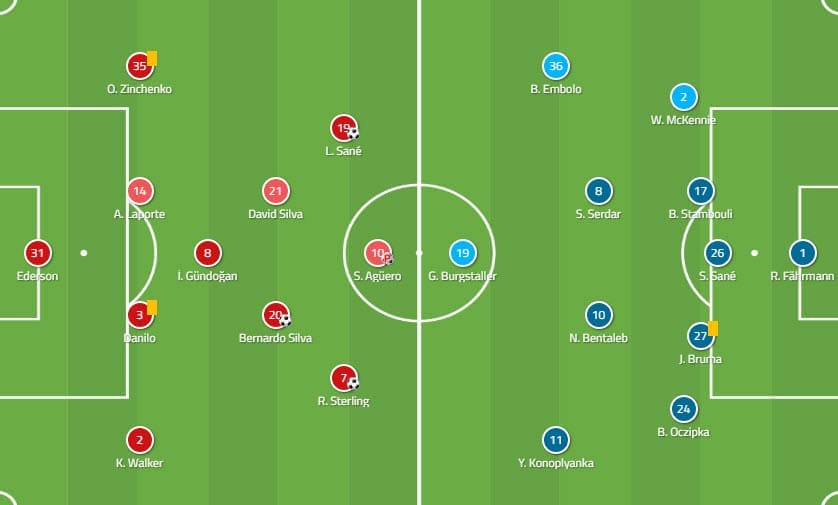
Domenico Tedesco stuck with the 5-4-1 that seemed to do the job for most of the first leg. Striker Guido Burgstaller was chosen in place of Mark Uth. Salif Sané once again played the role of the sweeper in the back line of five.
In terms of form, City had only lost one game in this year. Schalke have been enduring poor form in the Bundesliga, failing to win any of their past six games. They came into the Champions League week low on confidence after their previous defeat to Werder Bremen.
City’s ‘teenage’ issues
Pep Guardiola labelled City as still “teenagers” in a league dominated by veterans. His metaphor held some truth, considering City’s first half hour appeared lacklustre. They appeared too cautious to avoid conceding an away goal and were wary of taking risks. They had to wait for a penalty to begin their scoring tally.
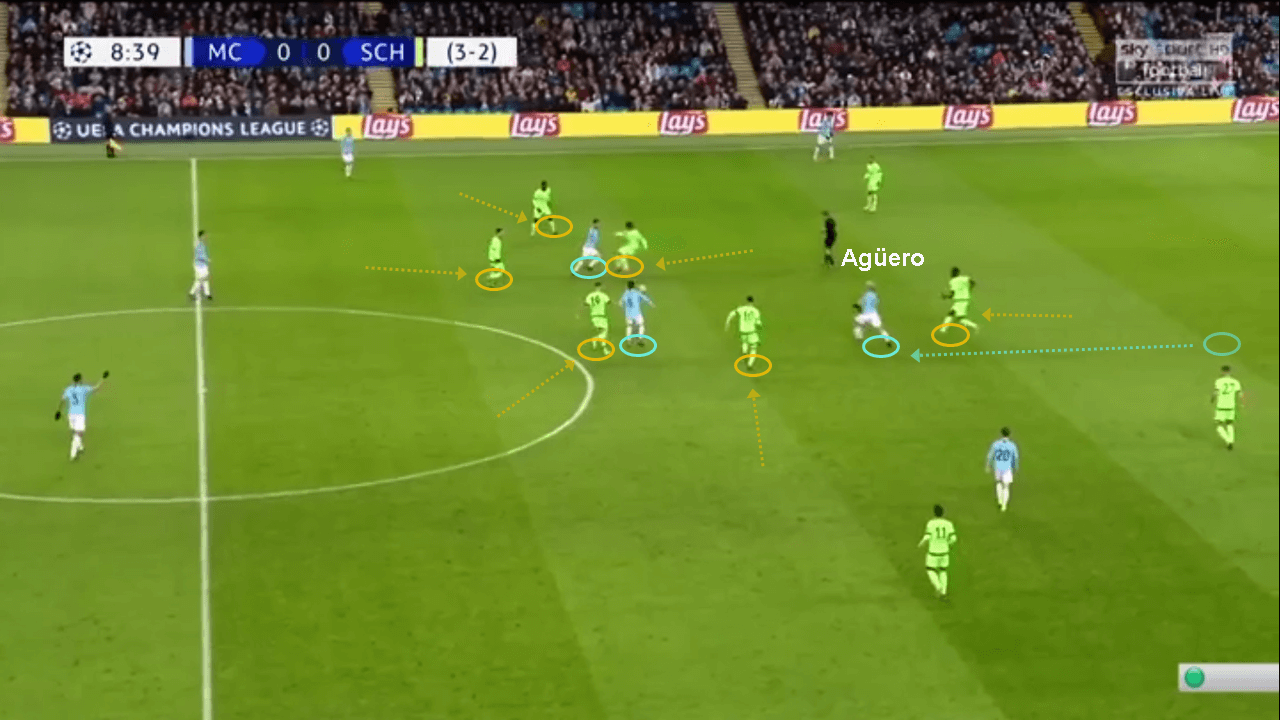
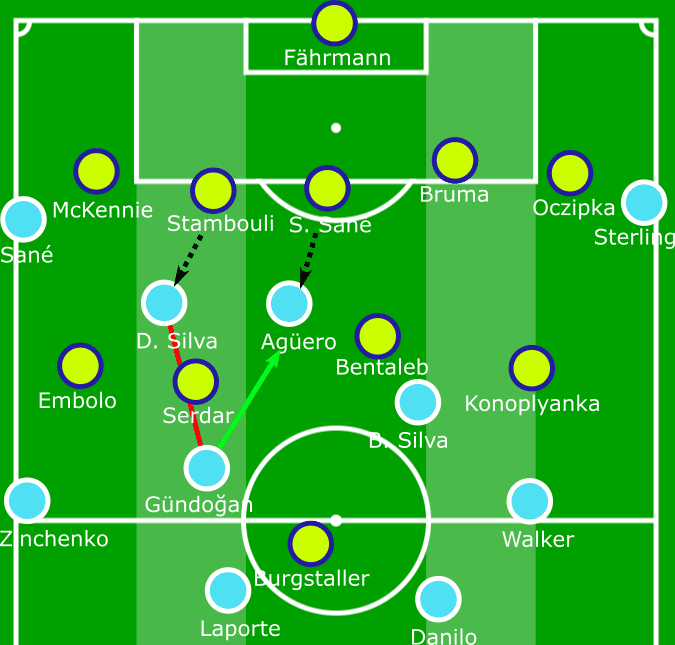
For this game, Guardiola chose to refer to every chapter from his plethora of experience in positional play. City’s structure was meant to reflect lots of fluidity, supplemented by penetrating runs and quick passing.
In the first half however, Schalke appeared to cut down spaces effectively. Sergio Agüero was closely marked and followed by Salif Sané when he dropped deeper into the midfield. There was a general lack of movement out wide.
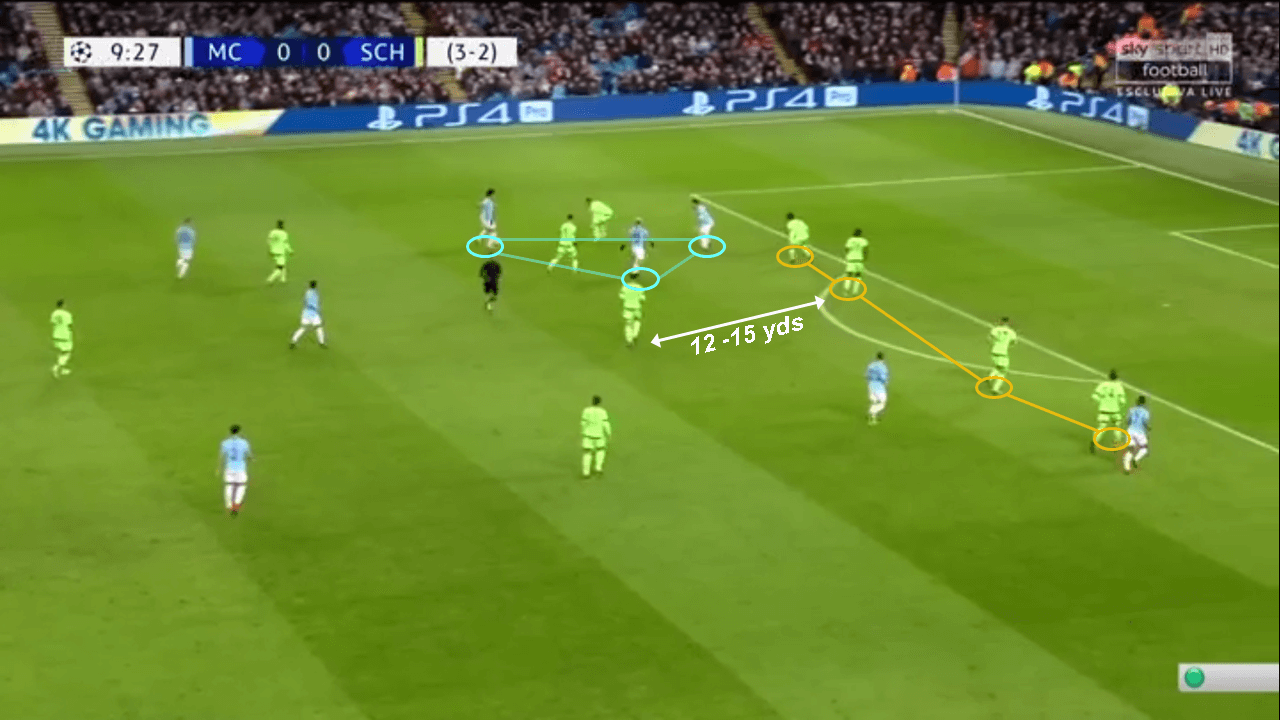

Inverted full-backs and half-spaces
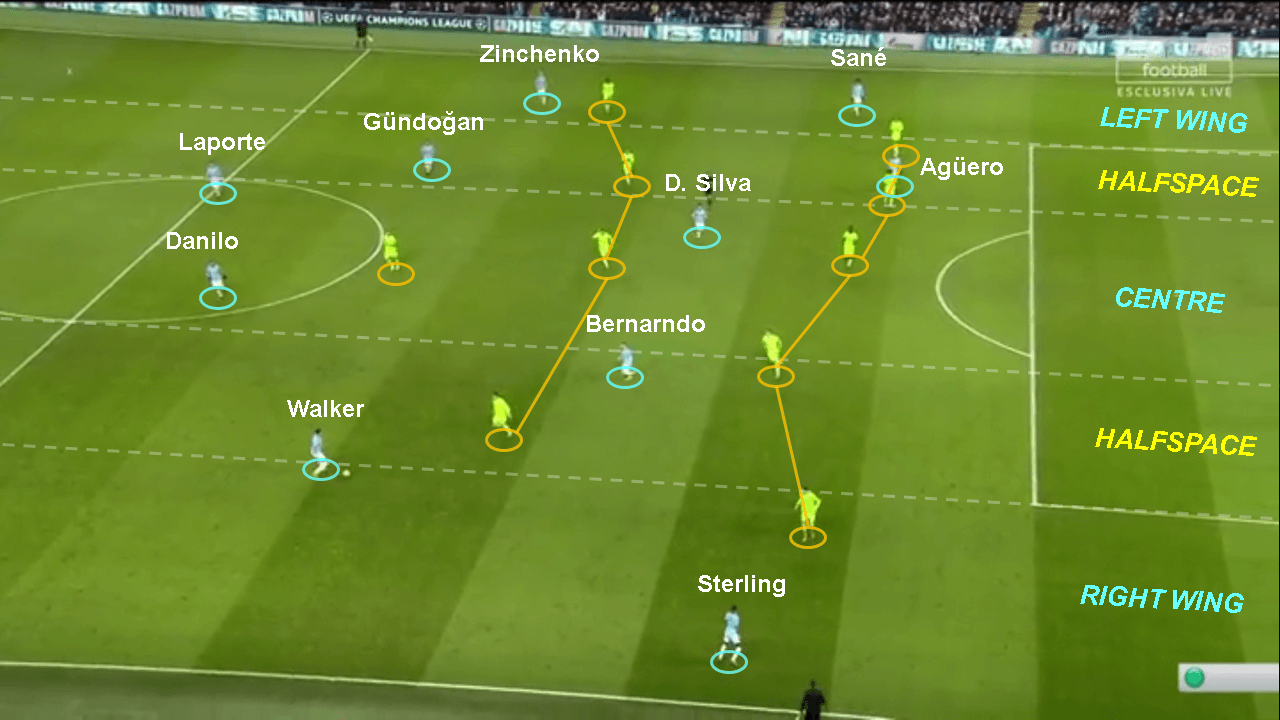
An inverted full-back is essentially a full-back who moves inside, into the corridors between the wide flanks and the central axis. It is a position whose name has been loosely thrown around following Guardiola’s extensive utilisation of it during his time at Bayern. But this word alongside half-spaces would be two words in the lexicon of positional play that could easily be referenced to this game with fine examples.
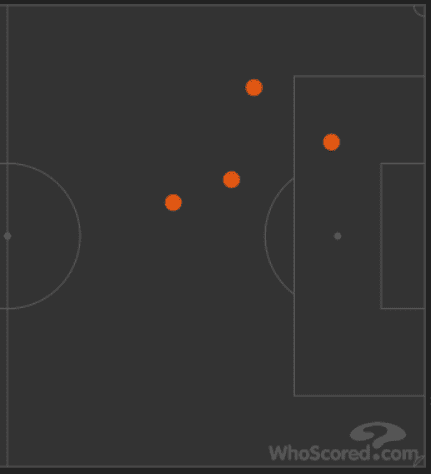
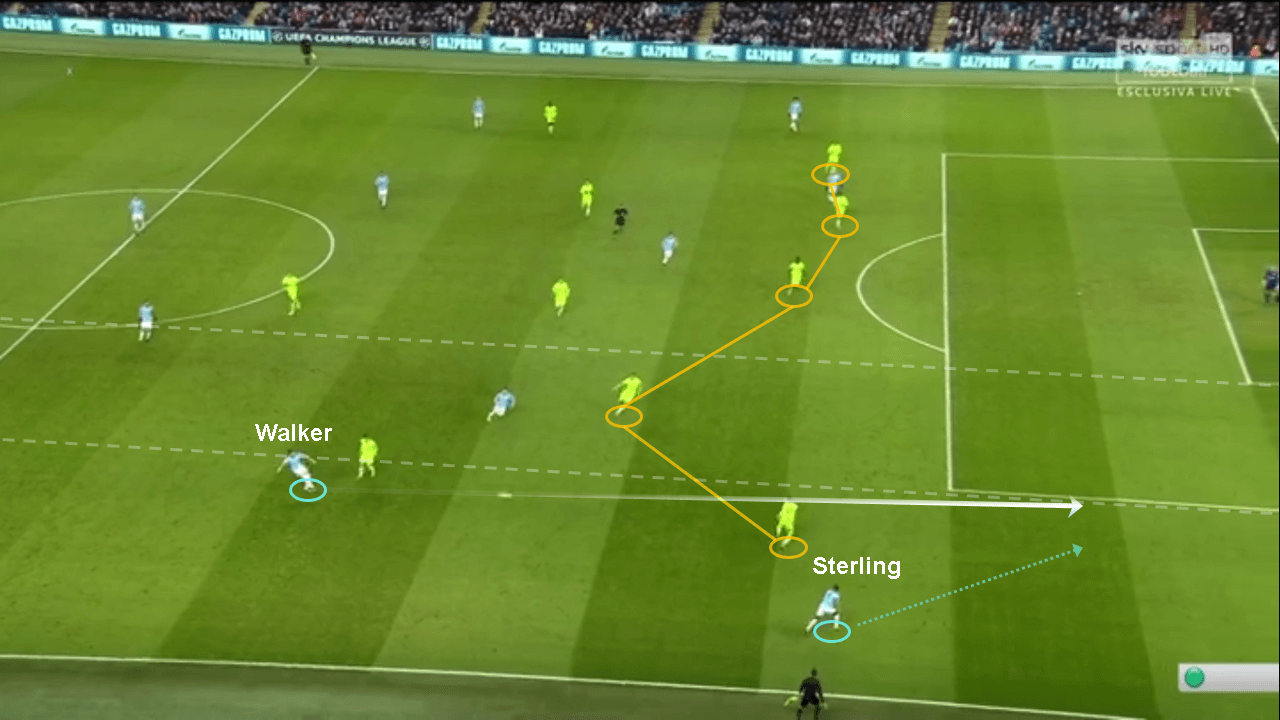
Zinchenko and Kyle Walker played these positions operating in the left and right half-spaces respectively. The advantage of positioning a player in the half-space is the attacking potential and the liberty to release the wide players or connect with the central ones. Although City’s game struggled to pick up momentum in the opening minutes, Walker’s through-ball for Sterling marked what would threaten Schalke throughout the game.
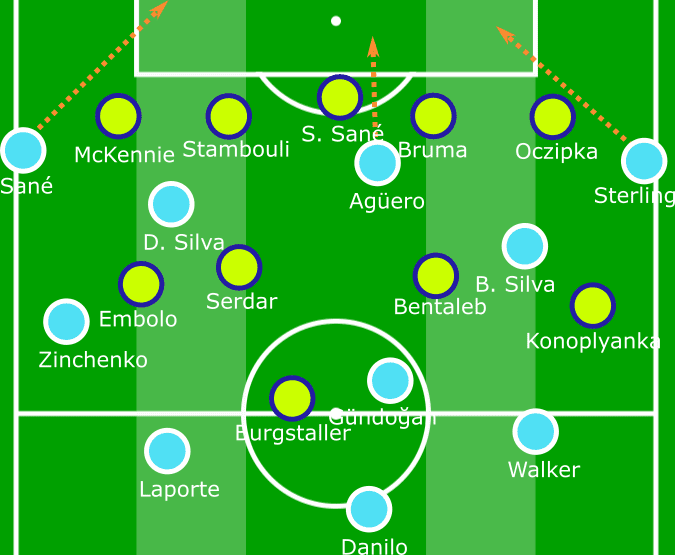
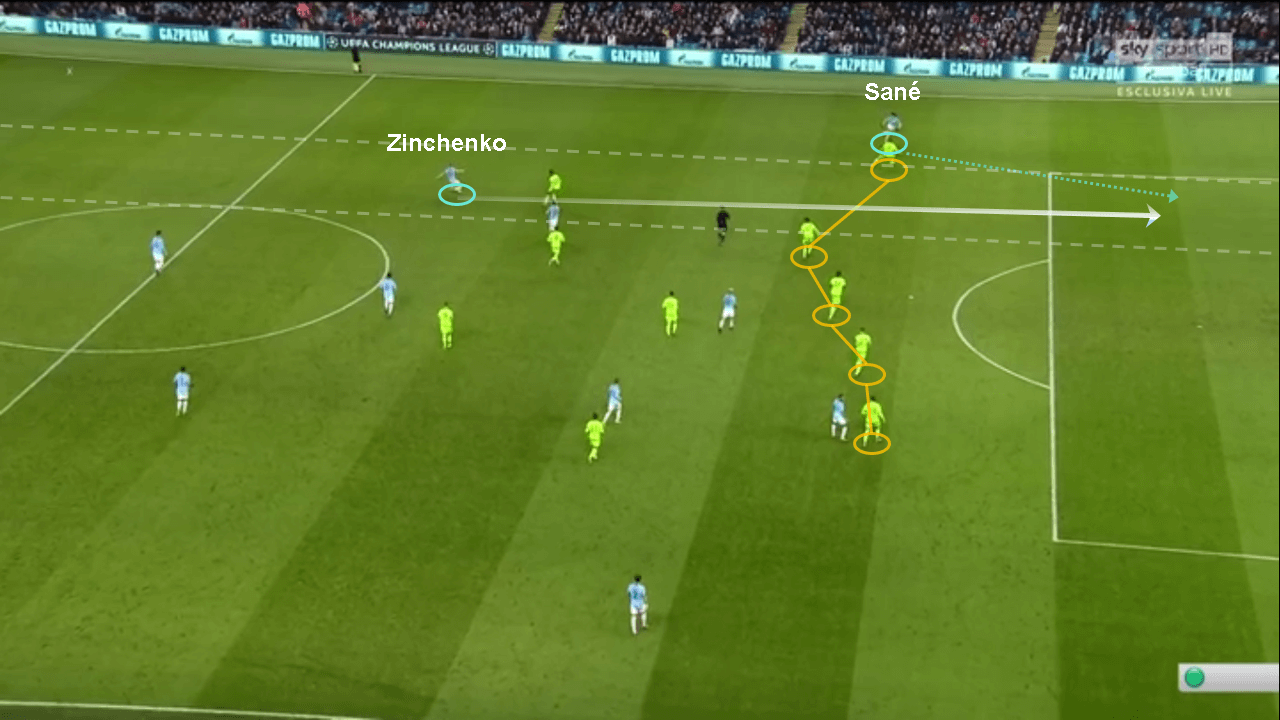
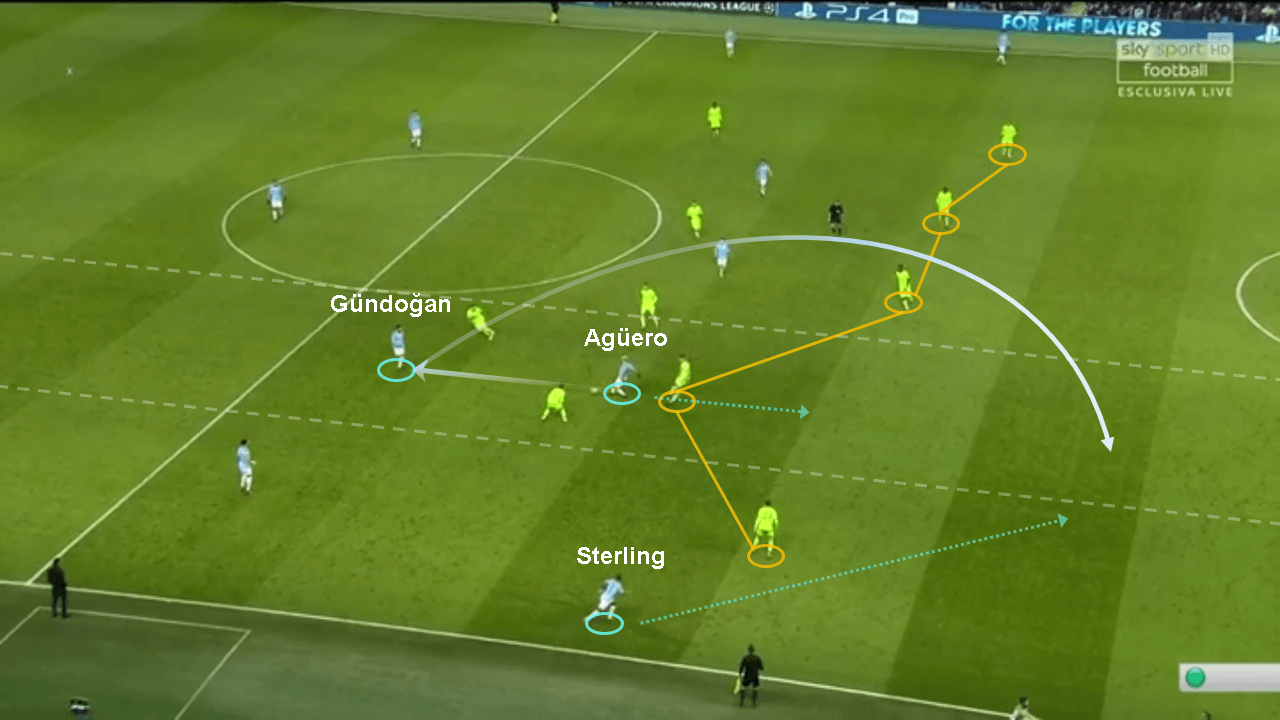
Positioning on multiple lines
One of the dogmas of positional play established by Cruyff and Rinus Michels right from the Ajax and Dutch era of Total Football was the positioning of players on different lines. Creating multiple lines enables the formation of passing triangles from the back. The team can then use this quick passing movement to progress up the pitch. We saw at least five, sometimes six, lines created by City during buildup.
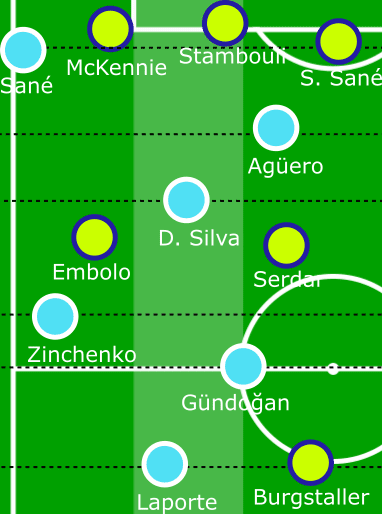
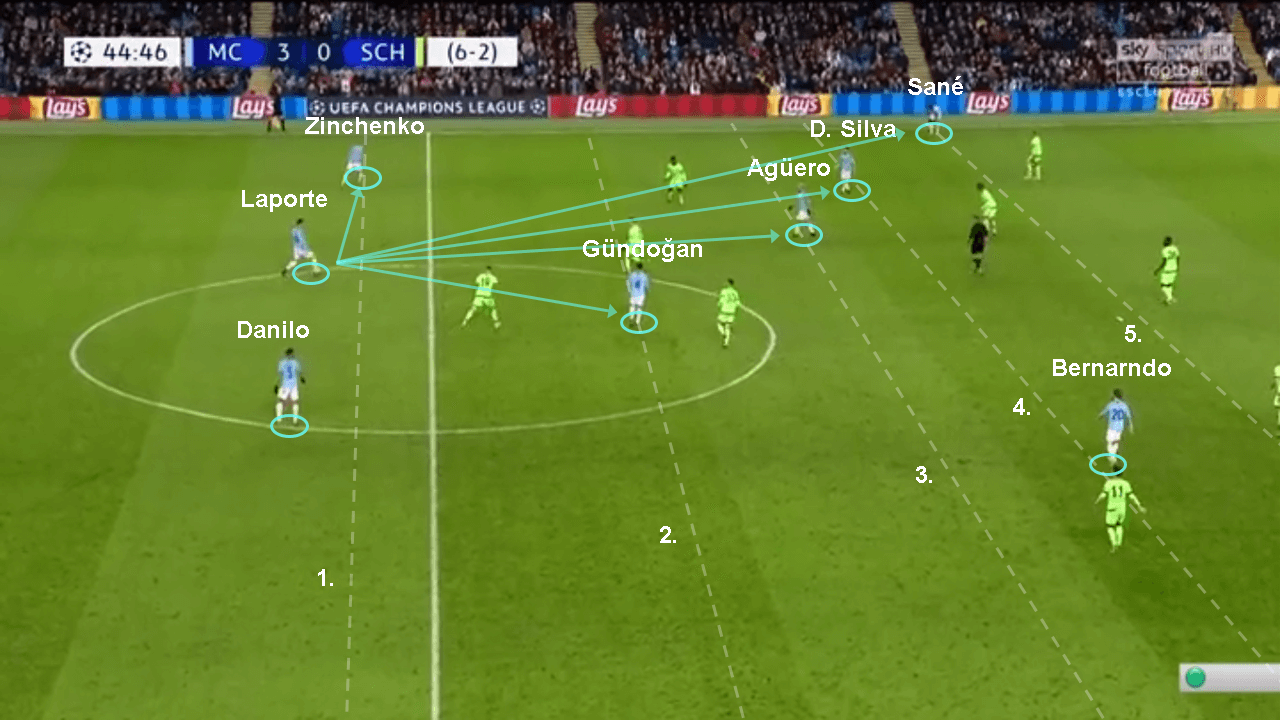
Guardiola has revived his adoption of the false nine – a striker dropping deeper into midfield to overload – with this City side. Agüero quickly adapted to his role and acted as a false nine throughout the game. He also created another passing line himself by doing so. Salif Sané was tasked with closely marking Agüero, following him if he came short and making life harder. But, better movement from wide players neutralised this pressure effectively.
City’s defensive discipline
Aside from an attacking masterclass from City, this game was outstanding defensively considering they used just one true centre-half in Laporte. Following Laporte’s substitution, Guardiola actually had no real central defenders on pitch, only full-backs.
City’s defence, adhering religiously to Cruyff’s philosophy, started from the top. They pressed and covered in pairs, always forming quadrants. The front two closest to the ball would press, while the two players at the back would cover. İlkay Gündoğan was always present behind this quadrant as a second cover.
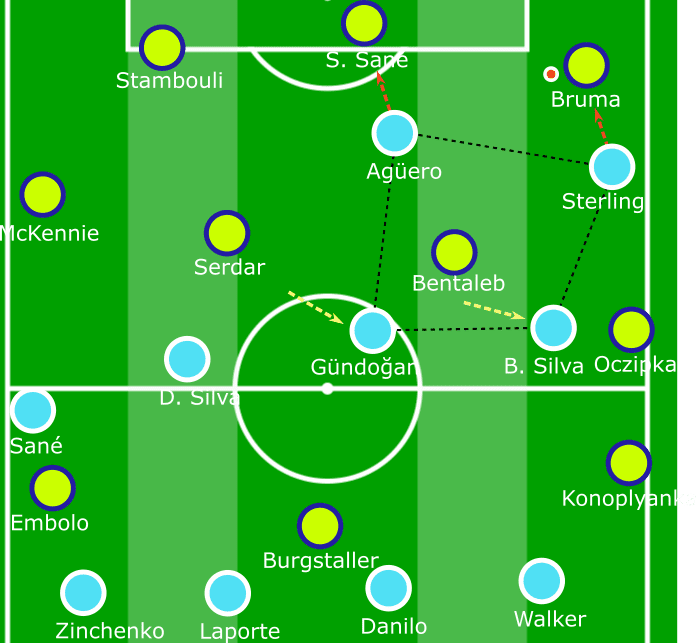
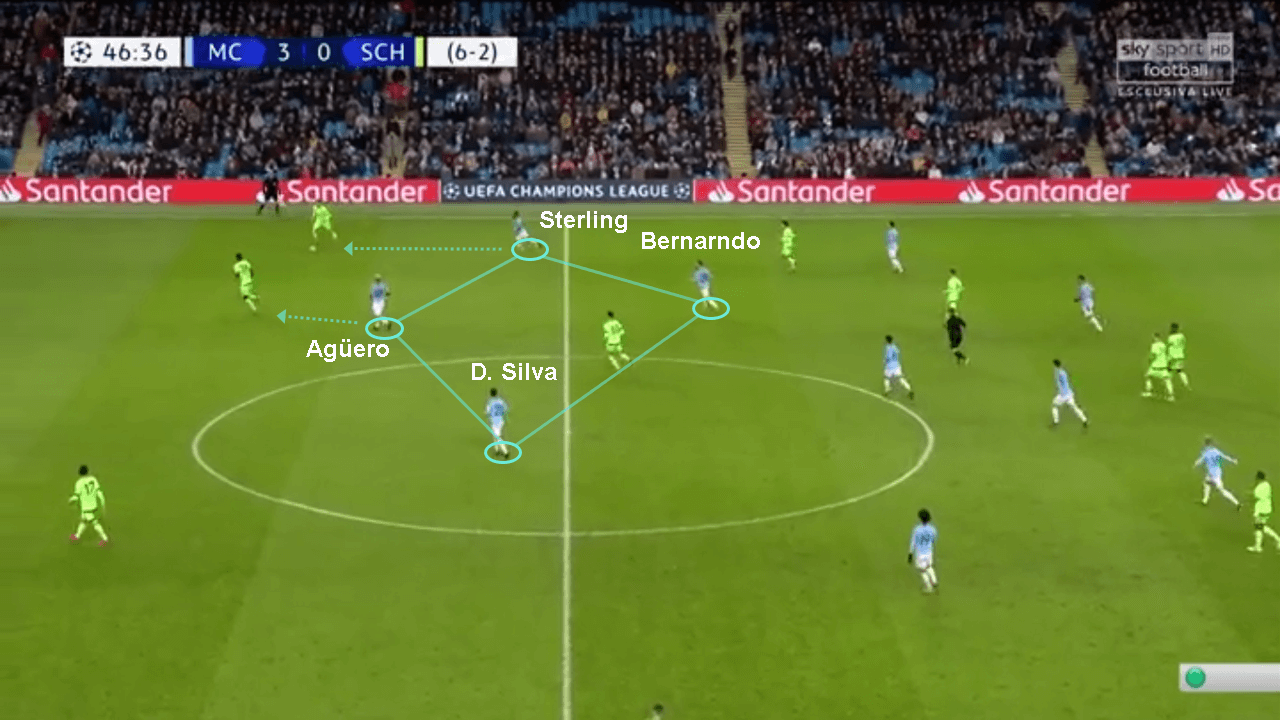
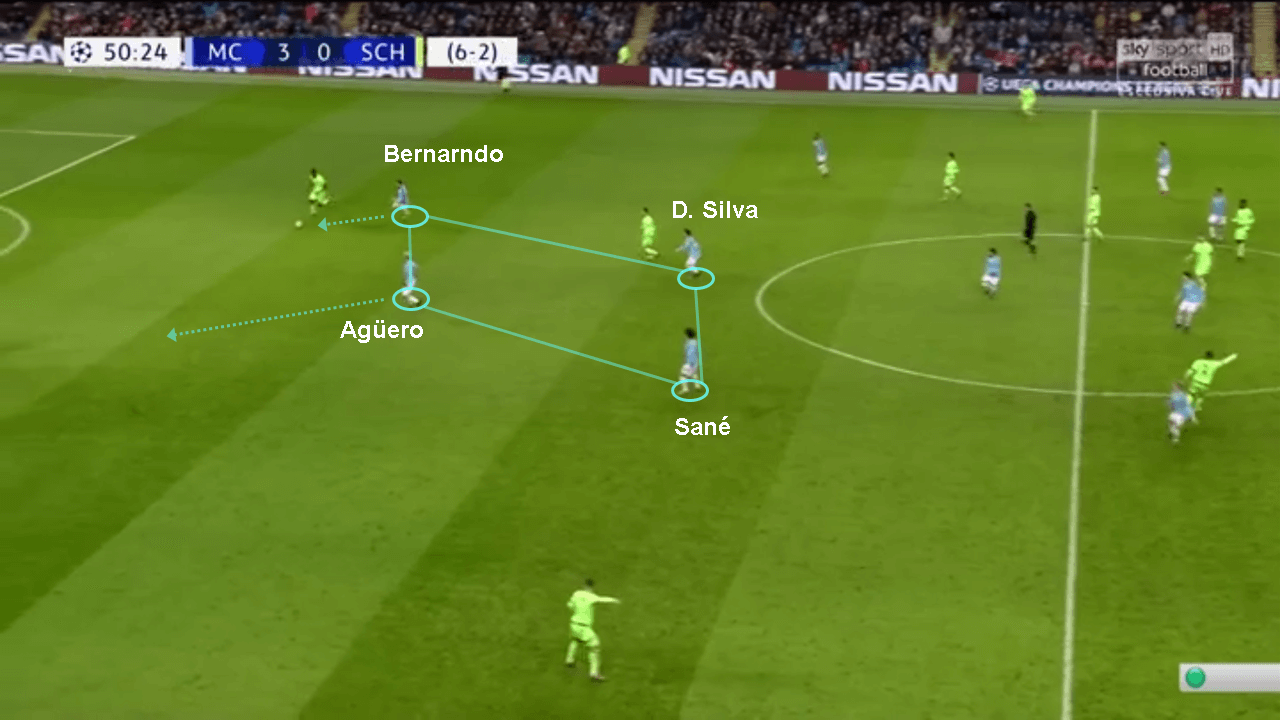
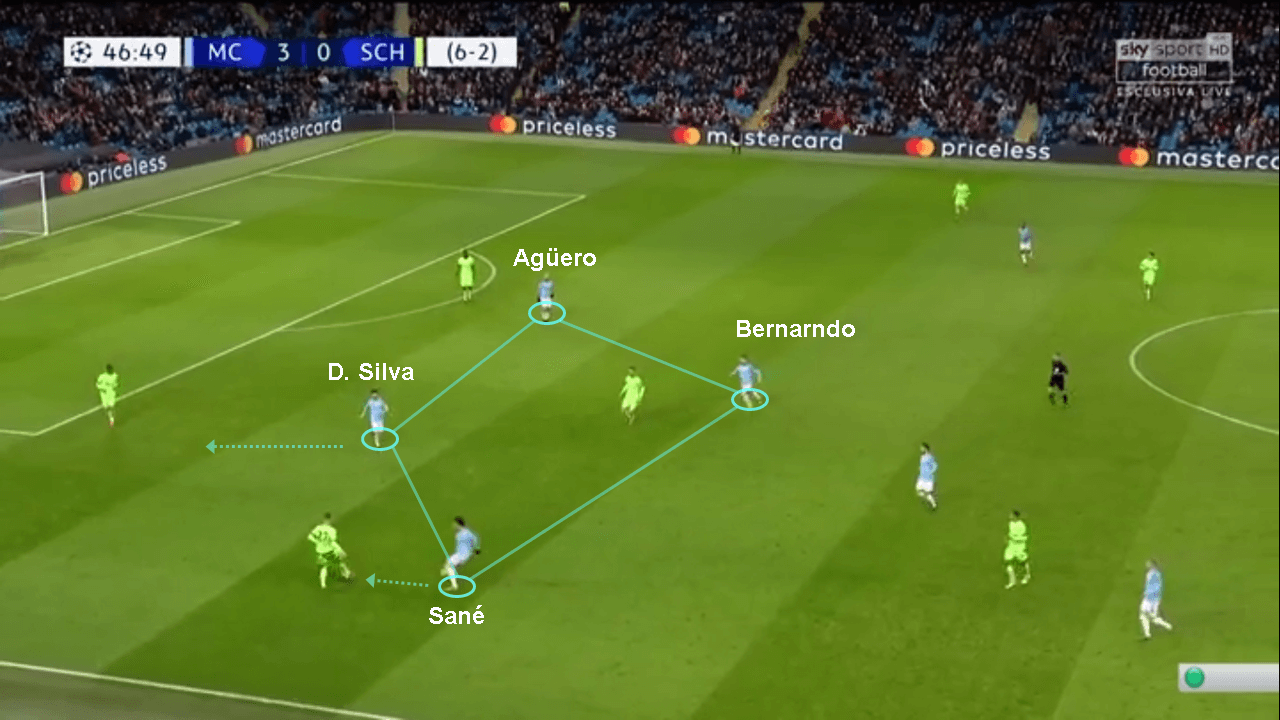
Upon losing the ball, all the City players showed substantial defensive work rate. They tracked back effectively to get as many bodies behind the ball and counter-pressed to win it quickly. With 16 interceptions during the game, their consistency in defence as a unit earned them a clean sheet.
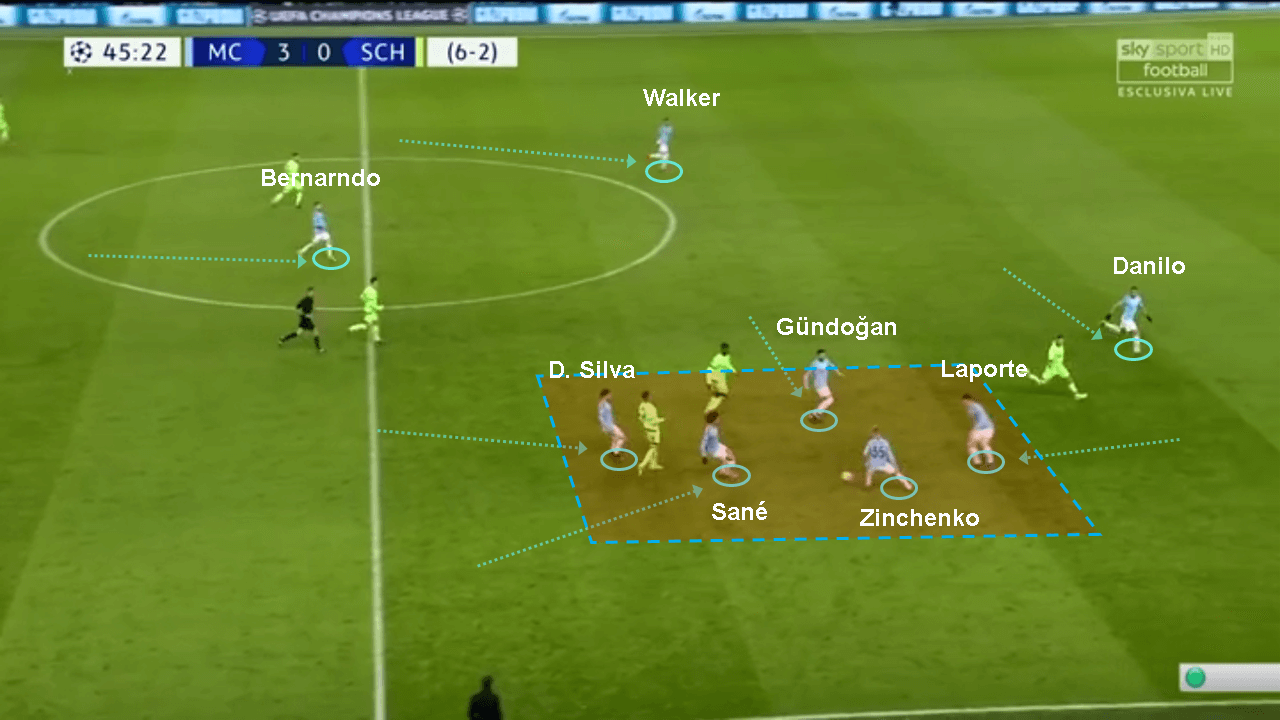
Leroy Sané chases the free space
One of Pep’s tenets derived from his Barcelona successes was the use of forward players. Guardiola seldom uses a traditional target man as a striker. During an interview once, he claimed: “My striker is the free space behind the defenders.” With no player in a permanent position to pin defenders in the central space, Pep choses to have his wide players or attacking midfielders constantly arriving there to create threats.
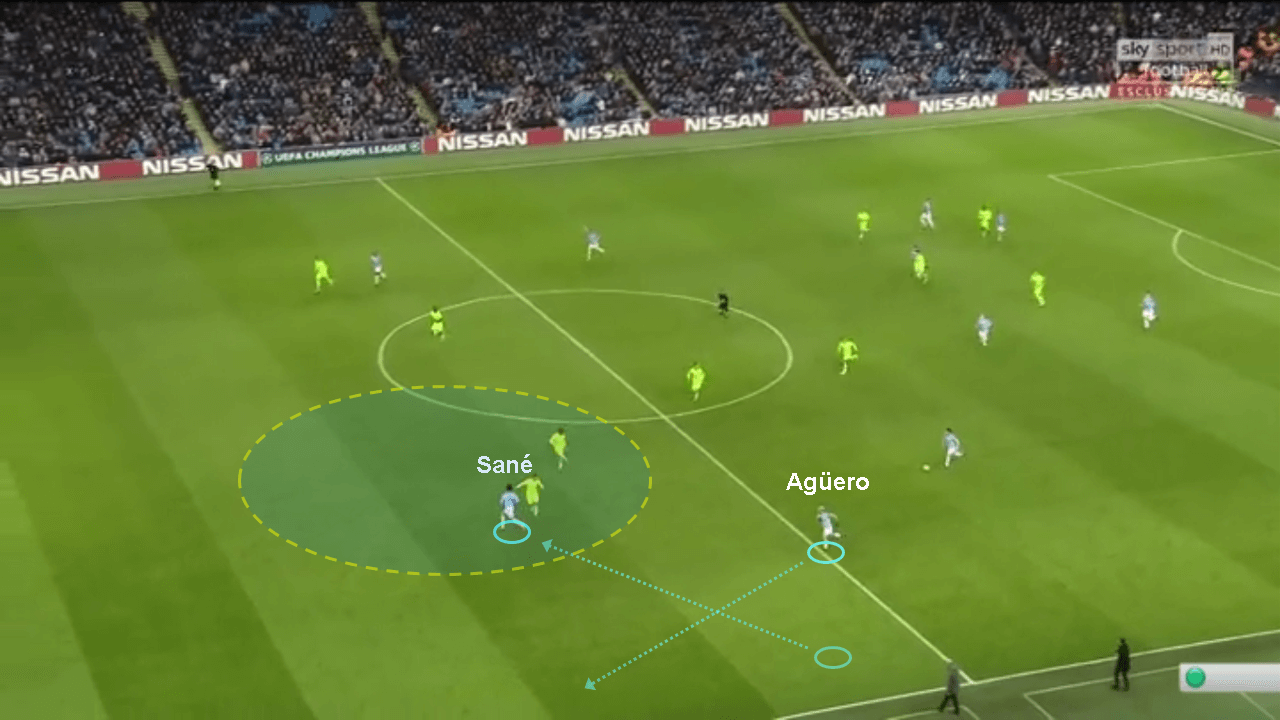
Aside from Agüero and later Gabriel Jesus playing as a false-nine, Leroy Sané became a menace when he started to move centrally. He alternated with Agüero and other players like Phil Foden in the centre creating chances that culminated in City’s goals like a domino effect.
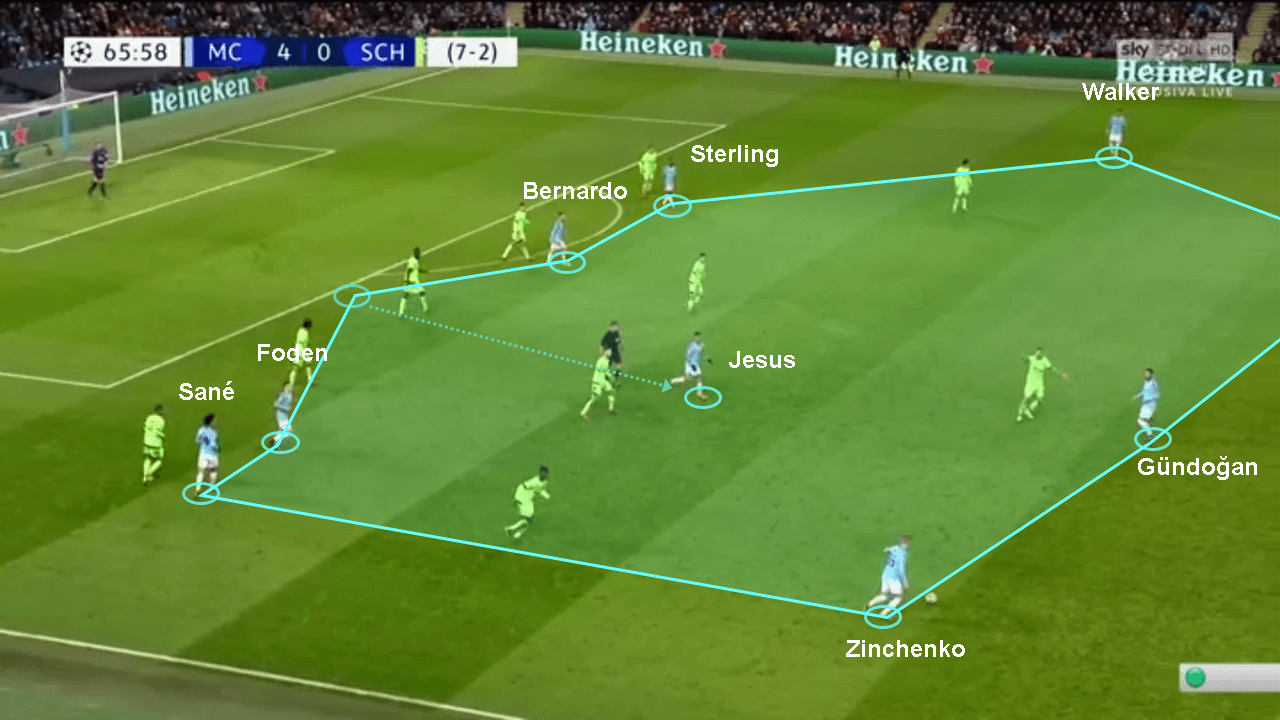
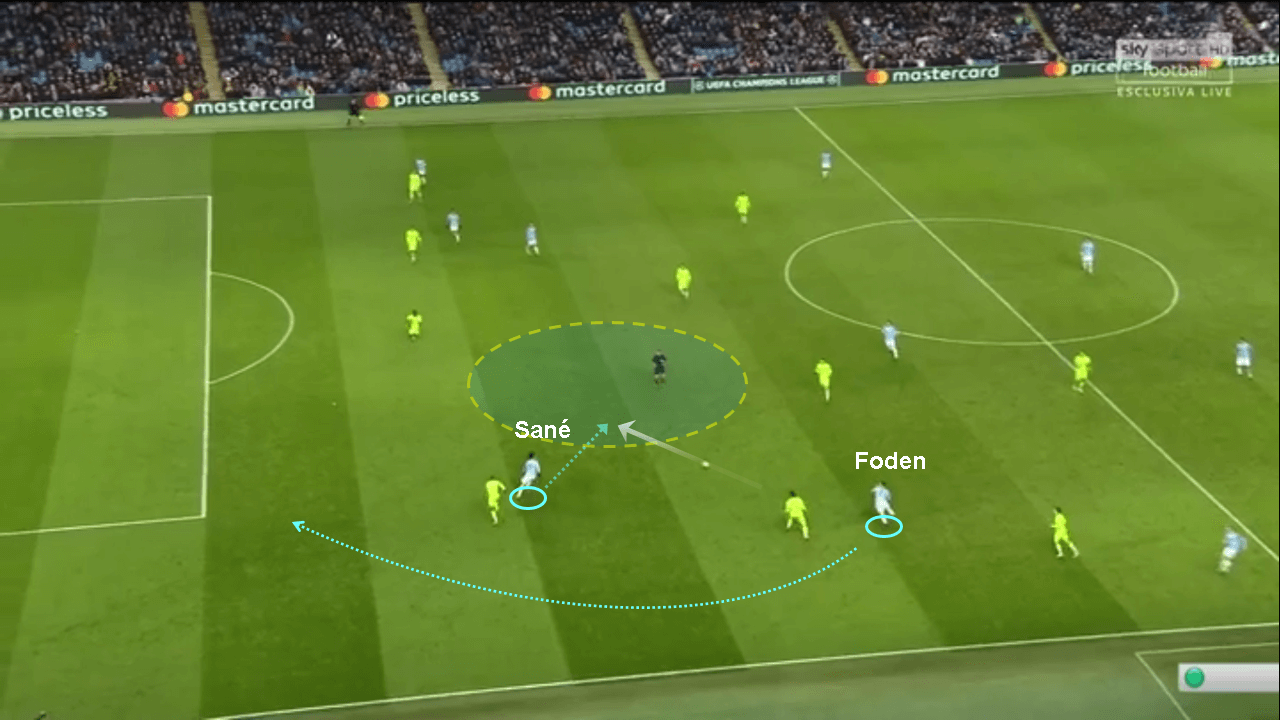
Goal number five sets the benchmark
Among the seven goals that City hammered at the Etihad, the fifth goal was the Sistine Chapel. It represented every bit of the beautiful football City have embraced under Guardiola.
Sculpted by Sané, it began with the rotational movement of three players to create space and draw defenders. Attacking the same space, players on the other side moved into the box aggressively. Salif Sané was caught pulling the line deep which allowed Zinchenko to take that extra touch and release his namesake Leroy with a perfectly weighted pass.
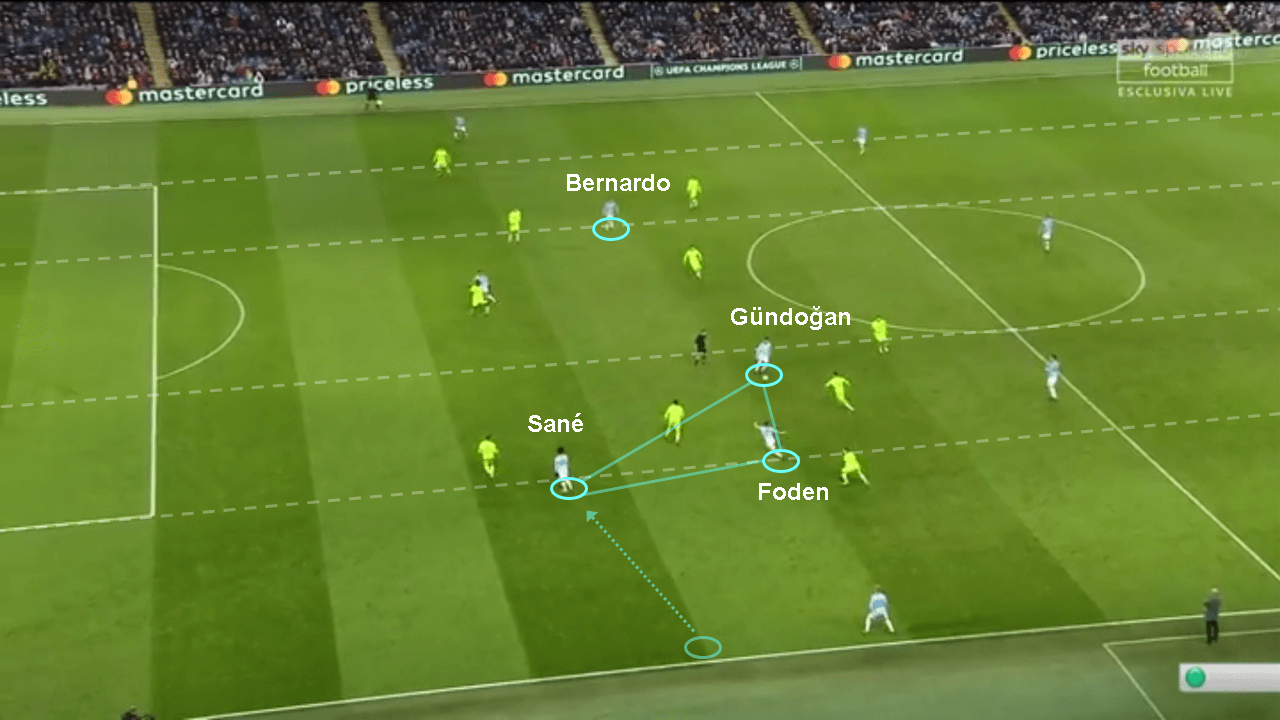
Finally it was Sané’s vision again to pick Bernardo Silva arriving late into the space left by the forwards to score.
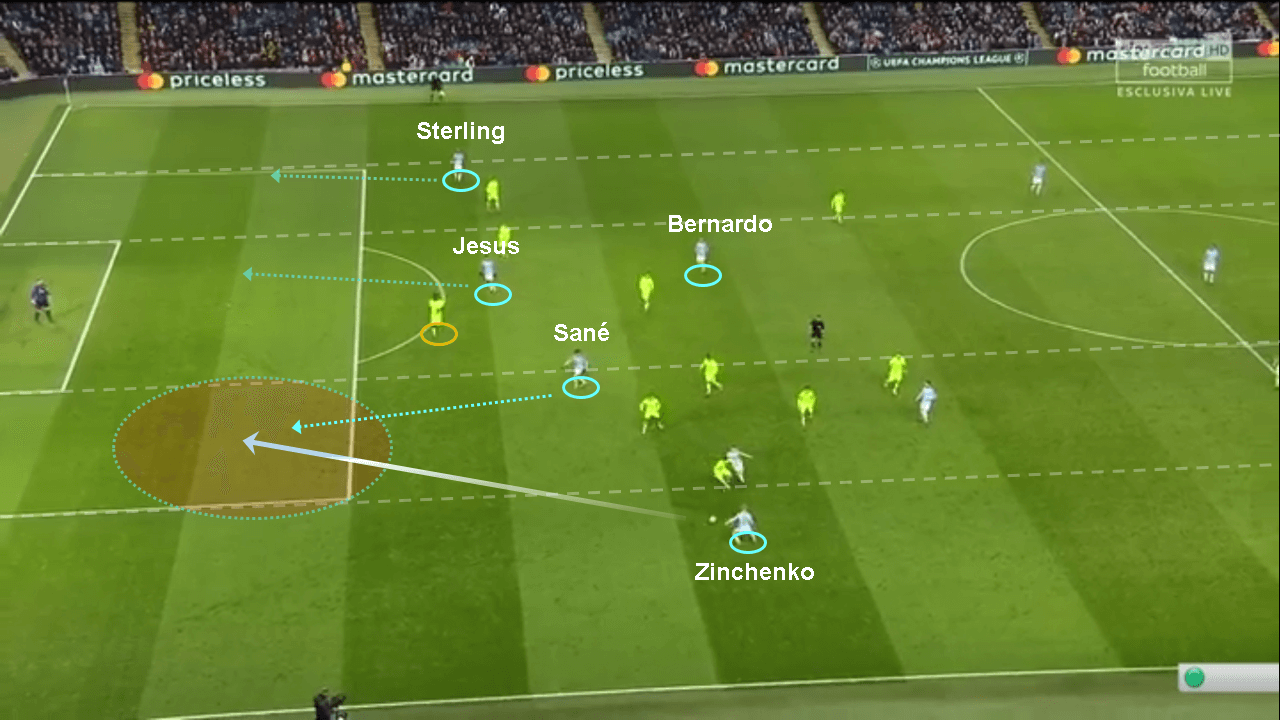
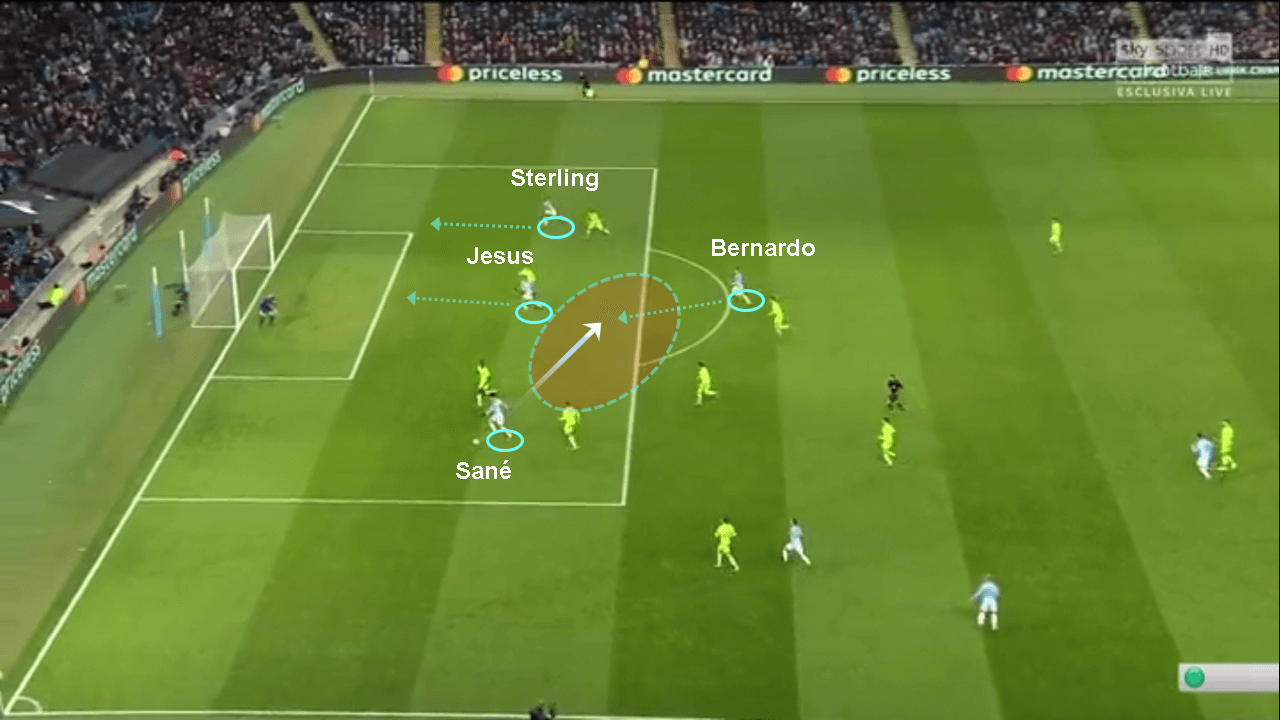
This goal packed all elements of positional play in one: rotational movement of players interchanging positions, effective identification and exploitation of free space, aggressive attacking runs into the box and the utilisation of the free man to finish the move
The stars that shone for City
In the Guardiola School of Positional Play, Leroy Sané and Raheem Sterling have been two students taking extra classes under their mentor. Guardiola has been critical and unforgiving in his expectations from them, repeatedly stating their young age and immense room for improvement. But his austere approach has shown results, as both the youngsters have raised their game to phenomenal levels under him.
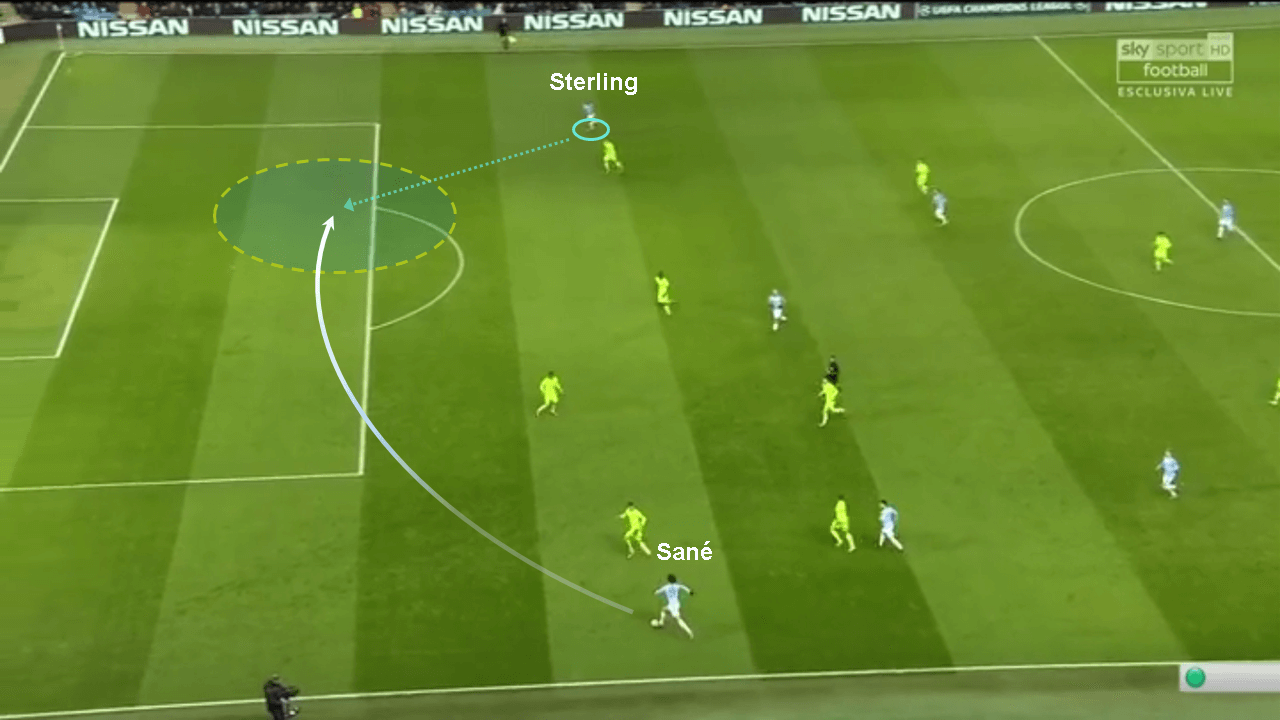
Zinchenko is living up to the demands of a regular first team starter in the absence of Benjamin Mendy. Gündoğan may not have the defensive panache of Fernandinho, but his sublime reading of the game and inch-perfect passing is a huge asset for City.
Irrespective of the controversy surrounding financial fair play with the club, Guardiola must be lauded for the work he has done with the squad since taking over. His players are highly versatile and can play in two or three positions effectively. Playing a Champions League fixture without true centre-backs and scoring in this manner is a remarkable feat by Guardiola.
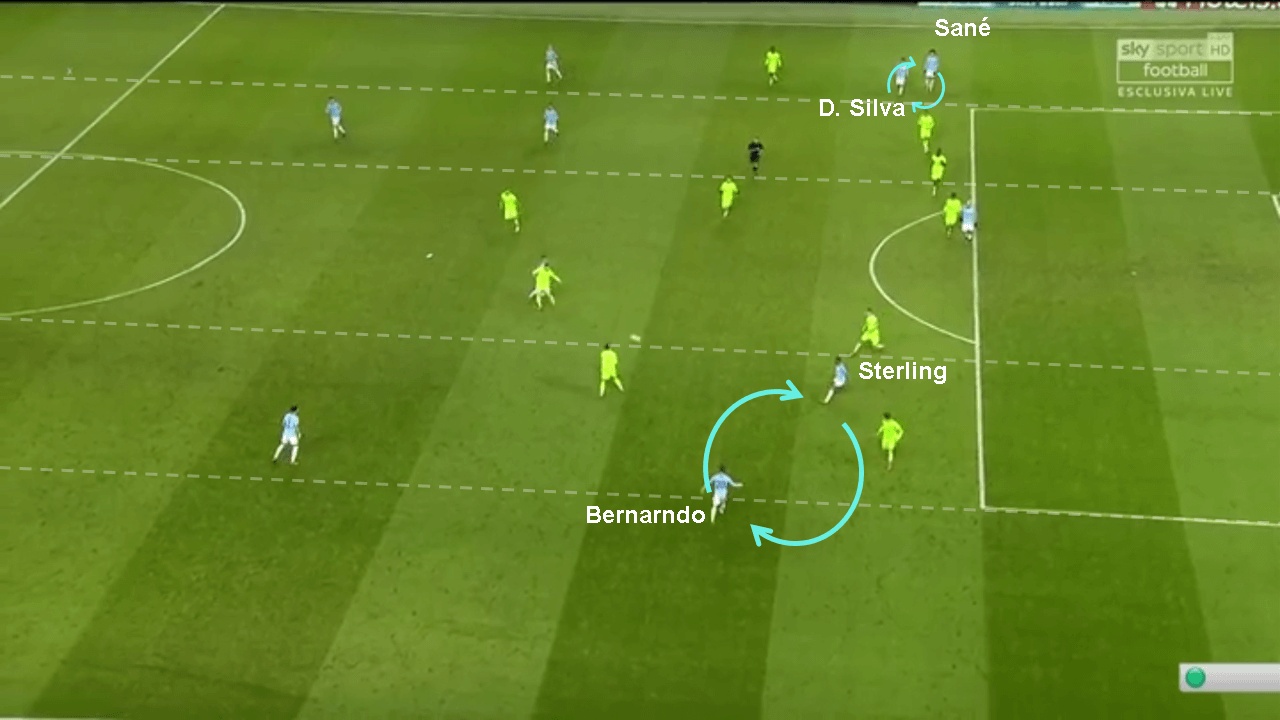
Conclusion
Schalke seemed to have approached the game with the singular objective to level the aggregate, but no plan B should City score first. City, on the other hand, looked overly cautious and needed a controversial penalty decision from VAR to gain confidence in the game.
In the later stages of the tournament, they cannot afford to be incredulous of Guardiola’s game plan and will need more confidence from the first minute. The proverbial ‘teenager’ will have to come of age, and soon too, as they await the draws on Friday for the Champions League quarter-finals. Could this year be finally a European success story for City?
If you love tactical analysis, then you’ll love the digital magazines from totalfootballanalysis.com – a guaranteed 100+ pages of pure tactical analysis covering topics from the Premier League, Serie A, La Liga, Bundesliga and many, many more. Pre-order your copy of the March issue for just ₤4.99 here, or even better sign up for a ₤50 annual membership (12 monthly issues plus the annual review) right here.

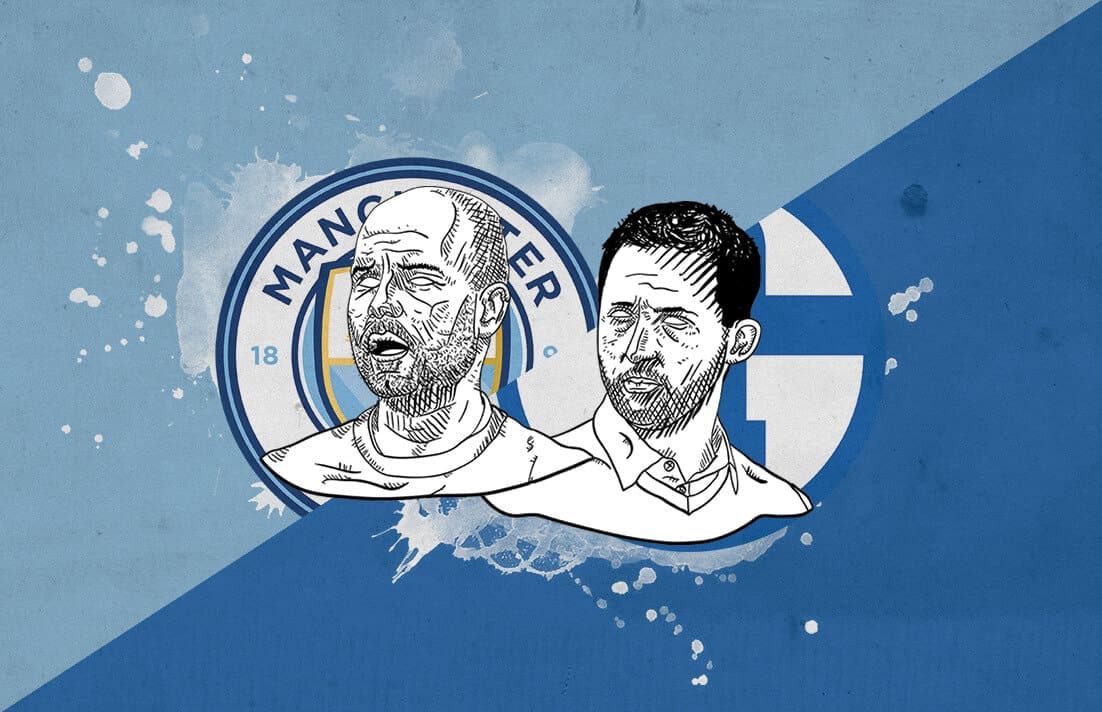



Comments